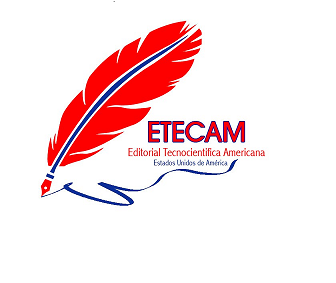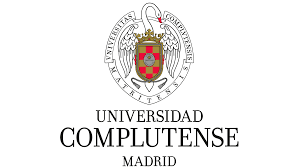Trichoderma asperellum in the control of Fusarium sp., in genotypes of Passiflora
DOI:
https://doi.org/10.51736/sa.v7iEspecial%206.408Keywords:
Cholupa, Granadilla, passion fruit, stem dryingAbstract
The present investigation was carried out with the objective of evaluating Trichoderma asperellum in the control of Fusarium sp. in genotypes of Passifloras, to reduce the wilt in the neck of the stem in Santo Domingo. A Complete Randomized Design (CRD) was implemented for this purpose, with three treatments, T1: Passion fruit (Passiflora edulis f. flavicarpa), T2: Cholupa (Passiflora maliformis L.) and T3: Granadilla (Passiflora ligularis), evaluating the variables: mortality percentage %, tolerance to fusarium %, days to affectation (days), number of diseased plants per week (plt/wk), incubation period of the fungus (days), disease severity (%). The results show that the passion fruit genotype (T2) showed total tolerance to the disease (100%), that is, all passion fruit plants treated with T. asperellum resisted infection by Fusarium sp. The severity of the Passifloras genotypes treated with T. asperellum to control Fusarium sp. was significant (p<0.05), and at the end of the trial (week 6), severe wilt was observed in the Granadilla, while in the Maracuya a significant improvement was obtained, almost returning to the absence of symptoms, with respect to the Cholupa an improvement in symptoms was obtained, returning to moderate wilt. The genotype Granadilla (T1), presented the highest percentage of mortality, reaching 5%, followed by Cholupa (T3), with an intermediate percentage of mortality, around 3.33% and finally, Maracuya (T2), which did not register mortality in this treatment, therefore, the best treatment.
Downloads
References
Andrade, P., Rivera, M., Landero, N., Silva, H., Matínez, S., & Romero, O. (2023). Beneficios ecológicos y biológicos del hongo cosmopolita Trichoderma spp. en la agricultura: una perspectiva en el campo mexicano. Revista Argentina de MicrobiologíA, 55(4), 366-377. https://doi.org/10.1016/j.ram.2023.06.005
Bernardes, R. (2015). Residuos orgánicos en el control de Fusarium oxysporum f. sp. passiflorae en maracuyá amarillo (Passiflora edulis f. flavicarpa). Revista Acta Biológica Colombiana, 20(3), 111-120. http://www.scielo.org.co/scielo.php?script=sci_abstract&pid=S0120-548X2015000300009&lng=es&nrm=iso
Bolaños, M., Zambrano, C., & Ojeda, N. (2019). Evaluación de cinco dosis de bacterias ácido para el control de fusarium (Fusarium oxysporum F. passiflorae), en el cultivo de la maracuyá (Passiflora edulis). Revista de Investigación en Ciencias Agronómicas y Veterinarias, ALFA, 3(9). https://revistaalfa.org/index.php/revistaalfa/article/view/68
Esquerre, B., Rojas, C., Llatas, S., & Delgado, G. (2014). El género Passiflora l. (passifloraceae) en el Departamento de Lambayeque, Perú. Botanica Malacitana, 39. 55-70. https://revistas.uma.es/index.php/abm/article/view/2576/2382
García, C., Robledo, J., & Castaño, J. (2018). Comparación de dos métodos de inoculación de Fusarium solani f. sp. passiflorae en plántulas de maracuyá (Passiflora edulis f. flavicarpa). Act. & Div. Cient. 21(1), 23-31.: https://pdfs.semanticscholar.org/b8c1/5d809e1e3f4c3578386ba52cc3229db73b1f.pdf
González, T. (2014). Disminución de la producción en el Maracuyá (Passiflora edulis Sims f. flavicarpa Degener). http://rein.umcc.cu/handle/123456789/629
Joy, P. (2010). Passion fruit (Passiiflora edulis Sims). https://kau.in/sites/default/files/documents/passion_fruit-passiflora_edulis_sims-passifloraceae.pdf
Lizcano, M. (2007). Evaluación de la actividad antifúngica del extracto detomillo (Thymus vulgaris) contra Botrytis cinerea, Fusarium oxysporum y Sclerotinia sclerotiorum . https://d1wqtxts1xzle7.cloudfront.net/57367460/tesis100-libre.pdf?1536867578=&response-content-disposition=inline%3B+filename%3DMARIA_CAROLINA_LIZCANO_GONZALEZ_TRABAJO.pdf&Expires=1723119079&Signature=FiLHHIJIMPsiG~9BThsDM416YNXswybaEKgKe1IGuw8tSC02Iupu7M
Mejia, M., Reyes, A., Cristobal, A., Tun, J., Borges, L. d., & Pacheco, J. (2016). Bacillus spp. en el control de la marchitez causada por Fusarium spp. en Capsicum chinense. Obtenido de Revista mexicana de fitopatología, 34(3), pag 208-222.: https://www.scielo.org.mx/scielo.php?script=sci_arttext&pid=S0185-33092016000300208
Michaelse, C., & Rep, M. (2009). Pathogen profile update: Fusarium oxysporum. Obtenido de Molecular plant pathology, 10(3), pag 311–324: https://www.ncbi.nlm.nih.gov/pmc/articles/PMC6640313/
Molano, Z. M. (2020). Avances en el estudio de la fenología de la cholupa (Passiflora maliformis L.) en zonas productoras de Colombia. Revista Colombiana de Ciencias Hortícolas 14(1). https://www.researchgate.net/publication/346322898_Progress_in_the_study_of_phenology_cholupa_Passiflora_maliformis_L_in_producing_areas_of_Colombia
Patiño, M., & Pérez, O. (2021). Evaluación de la resistencia de genotipos de Passifloras a Fusarium solani f.sp. passiflorae en granadilla. Revista Entramado, 17 (2). http://www.scielo.org.co/scielo.php?pid=S1900-38032021000200256&script=sci_arttext
Quiroga., R. M. (2012). Microorganismos rizosféricos, potenciales antagonistas de Fusarium sp. causante de la pudrición radicular de maracuyá (Passiflora edulis Sims). Acta Agronómica, 61(3), 265-272. http://www.scielo.org.co/scielo.php?script=sci_arttext&pid=S0120-28122012000300008
Rios, T., Varguez, A., & Martínez, Z. (2021). Control biológico de Fusarium oxysporum, agente causal de la pudrición del cormo en gladiolo, mediante estreptomicetos. Rev. mex. Fitopatol, 39(3). https://www.scielo.org.mx/scielo.php?script=sci_arttext&pid=S0185-33092021000300391#:~:text=oxysporum%20GL1%20(C).,seca%20y%20oscura%20(E).
Vargas, H., Rueda, E., & Gilchrist, E. (2017). Actividad antagónica de Trichoderma asperellum (Fungi: Ascomycota) a diferentes temperaturas. Revista Actualidades Biológicas, 34 (96), 104: https://revistas.udea.edu.co/index.php/actbio/article/view/14245
Villa, A., Pérez, R., Morales, H., Basurto, M., Soto, J., & Martínez, E. (2015). Situación actual en el control de Fusarium spp. y evaluación de la actividad antifúngica de extractos vegetales. Acta Agronómica, 64(2), 194-205. http://www.scielo.org.co/scielo.php?script=sci_arttext&pid=S0120-28122015000200011
Published
How to Cite
Issue
Section
License
Copyright (c) 2024 Denilson Cusme Tuarez, Hether Rosero Gonzales, Manuel Meza Loor, Diana Alava Cruz

This work is licensed under a Creative Commons Attribution-NonCommercial-ShareAlike 3.0 Unported License.






















































